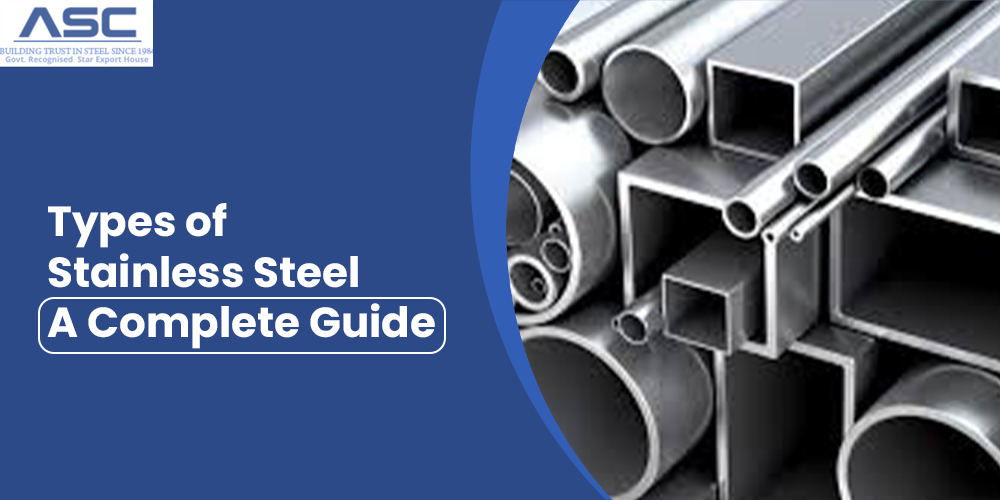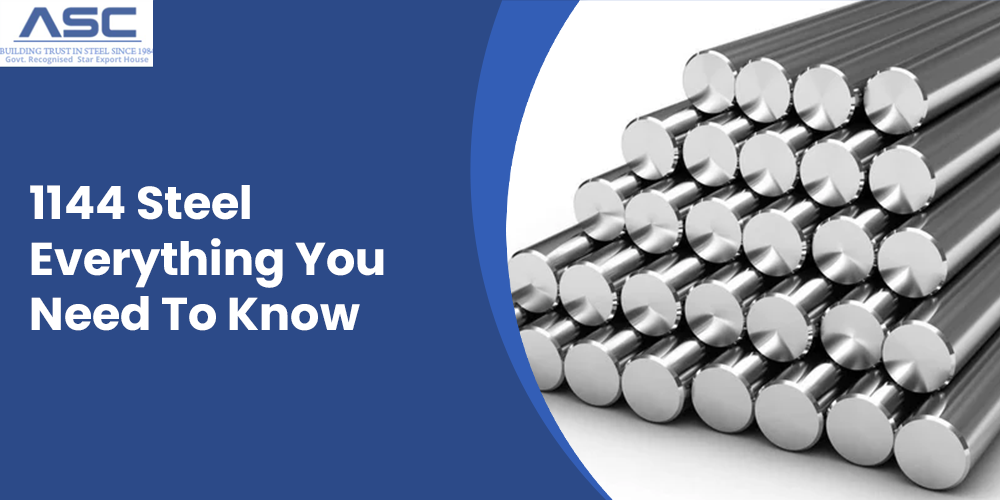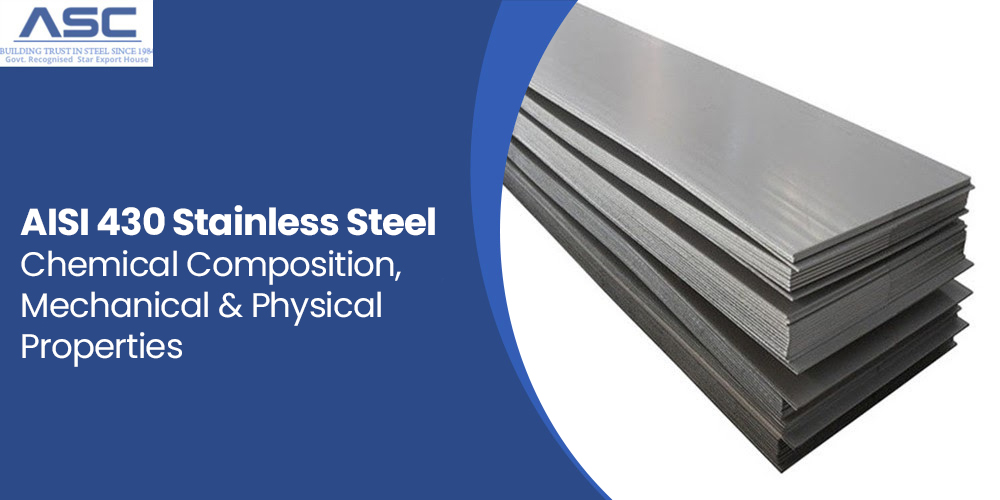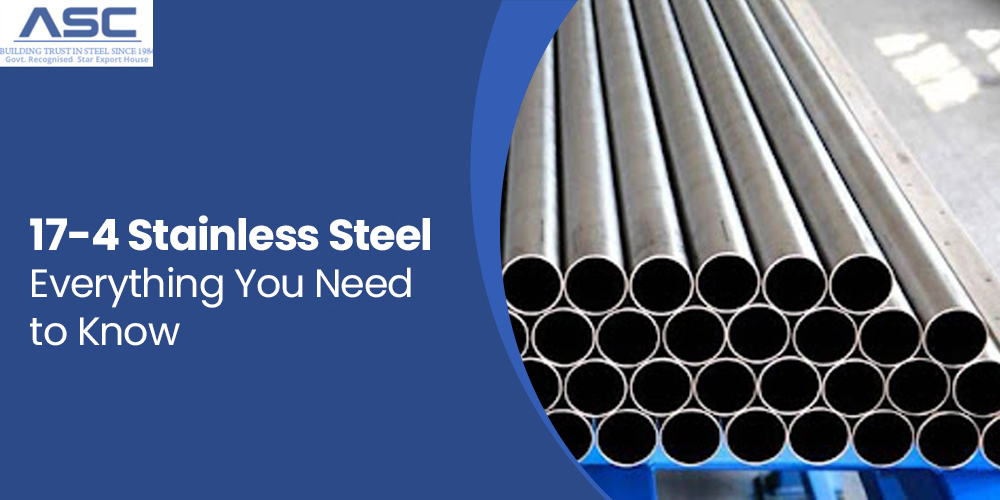What are the Most Common Types of Stainless Steel?
by AMC
Posted on June 13, 2024 at 01:00 PM

When choosing stainless steel for a custom wire basket or tray, the options can seem endless. Each type of stainless steel alloy has distinct properties such as tensile strength, melting point, oxidation resistance, and corrosion resistance.
To select the right grade of stainless steel, it's important to know your options. Here's a brief overview of the most common types and their properties.
Five Main Categories of Stainless Steel
Stainless steel alloys can be categorized into five main types:
- Austenitic Stainless Steels: These are the most commonly used stainless steels. They have high chromium content, which makes them highly resistant to corrosion. Austenitic alloys are typically non-magnetic, but they may become magnetic after cold working.
- Ferritic Stainless Steels: The second most common type, ferritic stainless steels are magnetic and can be hardened through cold working. They are generally less expensive due to lower nickel content.
- Martensitic Stainless Steels: These alloys have lower corrosion resistance compared to austenitic and ferritic types but offer high hardness. They are used in applications needing high tensile strength and impact resistance, sometimes with a protective coating for enhanced corrosion resistance.
- Duplex (Ferritic-Austenitic) Stainless Steels: Known as duplex for their mixed composition of austenite and ferrite, these steels offer better corrosion resistance, particularly against chloride pitting, and higher tensile strength than standard austenitic steels. They are widely used in industries like oil and gas for pipework and pressure vessels.
- Precipitation-Hardening (PH) Stainless Steels: These alloys are exceptionally strong and corrosion-resistant. They can achieve strengths three to four times higher than standard austenitic steels through heat treatment. PH stainless steels are commonly used in aerospace, nuclear, and oil and gas applications.
Types of Stainless Steels
1. Grade 301 Stainless Steel
Grade 301 stainless steel contains chromium and nickel, offering excellent corrosion resistance. It is strong and ductile when cold worked, making it suitable for welding, forming, and drawing applications.
2. Grade 302 Stainless Steel
Similar to grade 304 but with higher carbon levels, grade 302 stainless steel is known for its resistance to corrosive solvents, chemicals, and acids. It is commonly used for making conical compression springs and in kitchen machinery and food processing equipment.
3. Grade 303 Stainless Steel
Grade 303 is non-magnetic and highly machinable. While it cannot be hardened by heat treatment, it has good corrosion resistance, though less than grade 304. Grade 303 is often used in heavily machined parts such as gears, aircraft fittings, screws, shafts, nuts, and bolts.
4. Grade 304 Stainless Steel
Grade 304 is the most common type of stainless steel, known for its versatility. It has high tensile strength, approximately 621 MPa (90 ksi), and can withstand temperatures up to about 870°C (1,598°F). Grade 304 is widely used due to its combination of strength, temperature resistance, and corrosion resistance, making it ideal for various applications including custom wire basket designs.
5. Grade 309 Stainless Steel
Grade 309 is a nickel-chromium stainless steel with similar machinability to grade 304. It has high tensile strength and is resistant to chemicals. Grade 309 can endure very high temperatures, making it suitable for applications like oven linings, aircraft engines, automotive exhaust parts, and furnace components.
6. Grade 316 Stainless Steel
Grade 316 is another common type of austenitic stainless steel. It has a high tensile strength of 579 MPa (84 ksi) and can withstand temperatures up to around 800°C (1,472°F). While its tensile strength and temperature tolerance are slightly lower than grade 304, grade 316 offers superior resistance to chlorides (such as salt). This makes it ideal for applications exposed to salt or other chlorides.
7. Grade 317 Stainless Steel
Grade 317 is an austenitic stainless steel with high tensile strength, corrosion resistance, and elevated nickel and chromium content. It includes molybdenum to enhance resistance to chloride pitting. Grade 317 is used in chemical processing and marine industries due to its excellent pitting resistance, despite being more expensive than similar alloys.
8. Grade 321 Stainless Steel
Grade 321 stainless steel contains titanium for enhanced corrosion resistance against chemicals and high temperatures. It can withstand oxidation up to 1500°F and has better stress rupture properties than grade 304. Grade 321 is non-magnetic and maintains strength at low temperatures.
9. Grade 347 Stainless Steel
Grade 347 stainless steel includes columbium and tantalum for durability at high temperatures. This non-magnetic alloy is ideal for welding and applications involving intermittent heating between 800°F and 1650°F. It is also ductile and can be formed through processes like stamping, spinning, and drawing.
Ferritic Stainless Steels
1. Grade 405 Stainless Steel
Grade 405 stainless steel offers lower corrosion resistance compared to grade 430. It is suitable for mildly corrosive environments and contains aluminum, preventing hardening after welding. Applications include steam nozzles and quenching racks.
2. Grade 408 Stainless Steel
Grade 408 stainless steel is highly heat-resistant but has poor corrosion resistance. It consists of 11% chromium and 8% nickel, making it suitable for applications requiring high heat resistance.
3. Grade 409 Stainless Steel
Grade 409 stainless steel combines high-temperature tolerance with good corrosion resistance. It is particularly resistant to exhaust gas and atmospheric corrosion, although less so than grade 430. Grade 409 is commonly used in automotive applications like exhaust systems.
4. Grade 420 Stainless Steel
Grade 420 stainless steel has the highest hardness among stainless steel grades, reaching up to 50 HRC with 12% chromium content. It offers good ductility and corrosion resistance, particularly against alkalis, fresh water, foods, and mild acids. Cutlery is often made from grade 420 stainless steel due to its corrosion resistance, although prolonged exposure to certain foods can cause pitting.
5. Grade 430 Stainless Steel
Grade 430 stainless steel has good resistance against nitric acid and is less strong than austenitic alloys. It has a tensile strength of 450 MPa (65 ksi), which is sufficient for heavy-duty applications.
6. Grade 434 Stainless Steel
Grade 434 stainless steel is stronger than grade 430, with a tensile strength of 540 MPa (78 ksi) and a maximum operating temperature of 815°C (1,499°F). It is more suitable for high-temperature applications compared to grade 316 stainless steel and offers better toughness than grade 430. Grade 434 stainless steel also has excellent pitting resistance.
7. Grade 436 Stainless Steel
Grade 436 stainless steel is a modification of grade 434, enhanced with columbium and molybdenum to reduce roping or wrinkling during stretch forming operations. It is highly magnetic and offers good resistance to abrasion. Grade 436 finds applications in appliance trims and automotive components.
8. Grade 442 Stainless Steel
Grade 442 stainless steel is a popular precipitation hardening grade known for its high strength and corrosion resistance. It is ductile and relatively soft for a steel alloy, making it suitable for high-friction applications. Grade 442 is widely used across various industries.
9. Grade 444 Stainless Steel
Grade 444 stainless steel is a low-carbon alloy with added molybdenum for improved pitting and oxidation resistance. It offers a balance of high strength and good ductility, allowing for a variety of stretch bending operations. However, grade 444 has limited weldability. Common applications include roofing, marine environment coatings, and food processing equipment.
Martensitic Stainless Steel
1. Grade 410 Stainless Steel
Grade 410 is a martensitic stainless steel known for its corrosion resistance, which can be further improved through hardening, polishing, and tempering processes. While not as corrosion resistant as austenitic steels, grade 410 performs well in mild corrosive environments.
2. Grade 410S Stainless Steel
Grade 410S is a low-carbon variation of grade 410 stainless steel that remains ductile and soft even at high temperatures. It does not harden, making it resistant to cracking during welding or thermal exposure. Grade 410S is used in thermal processing, petroleum refining, and other applications in the petrochemical industry.
3. Grade 414 Stainless Steel
Grade 414 is similar to grade 410 but includes added nickel for increased strength, especially at similar thicknesses. It is commonly used in mining equipment such as forged shafts, spindles, beater bars, fasteners, and valve seats.
4. Grade 416 Stainless Steel
Grade 416 stainless steel boasts the highest machinability among all stainless steels, with a rating of 85%. It is available in various forms including highly tempered, hardened, or unhardened. While it offers less corrosion resistance compared to austenitic steels, grade 416 is highly resistant to fresh water, acids, and alkalis. It is commonly used in automatic screw-machined components, gears, bolts, and washing machine parts.
5. Grade 420 Stainless Steel
Grade 420 stainless steel has a tensile strength of approximately 586 MPa (85 ksi) when annealed. After hardening and stress relieving, its tensile strength increases to about 1586 MPa (230 ksi). While not as chemically resistant as austenitic and ferritic stainless steels, grade 420 has good resistance to mild acids, water, some alkalis, and food compounds. It is often used for cutlery due to its high tensile strength and impact resistance.
6. Grade 440 Stainless Steel
Grade 440 stainless steel contains high levels of carbon, allowing it to be heat treated for exceptional wear resistance and edge retention. It is magnetic and offers moderate corrosion resistance. Grade 440 stainless steel is commonly used in knives, scissors, and parts exposed to oil or gas environments.
Duplex Stainless Steels
1. Grade 2205 Stainless Steel
Grade 2205 stainless steel is highly resistant to stress corrosion cracking, pitting, and crevice corrosion due to the addition of nitrogen. It offers nearly twice the corrosion resistance of other austenitic steels. Grade 2205 is widely used in industries such as oil and gas, petrochemicals, marine environments, and pulp and paper mills where high strength and excellent corrosion resistance are required.
2. Grade 2304 Stainless Steel
Grade 2304 stainless steel provides similar corrosion resistance to grade 316 austenitic steel but with nearly double the yield strength. It performs well in colder temperatures, typically ranging from -58°F to 572°F (-50°C to 300°C). This makes it suitable for applications requiring strength and corrosion resistance in challenging environments.
3. Grade 2507 Stainless Steel
Grade 2507 stainless steel offers high thermal conductivity, strong resistance to chloride stress corrosion, and a low coefficient of thermal expansion. It is ideal for applications needing superior corrosion resistance and high tensile strength. Grade 2507 is commonly used in marine equipment, offshore oil platforms, and various mechanical and structural components.
Precipitation Hardening (PH) Stainless Steels
1. Grade 17-4 Stainless Steel
Grade 17-4 stainless steel offers exceptional strength and moderate corrosion resistance. Its strength can be adjusted through heat treatment processes. It has fair machinability and is magnetic. Grade 17-4 is commonly used in aerospace, petroleum, and chemical industries where high strength and moderate corrosion resistance are required.
2. Grade 15-5 Stainless Steel
Grade 15-5 stainless steel is known for its high strength, good corrosion resistance, toughness in transverse direction, and capability for hardness. It is suitable for hot working but not ideal for cold working. Grade 15-5 is widely used in high-pressure and corrosive environments, particularly in aerospace applications.
Table of Stainless Steel Alloys
| Alloy | Tensile Strength | Maximum Use Temp | Melting Point | Resistance |
| Austenitic Alloys | ||||
| Grade 301 Stainless | 515 MPa (75 Ksi) | 871 °C (1600 °F) | 1399-1421°C (2550-2590°F) | Excellent corrosion resistance |
| Grade 302 Stainless | 585 MPa (85 Ksi) | 870˚C (1,679˚F) | 1400-1420 °C (2550-2590 °F) | Excellent corrosion resistance |
| Grade 303 Stainless Steel | 690 MPa ( 100 Ksi) | 760˚C (1,400˚F) | 1400-1420 °C (2550-2590 °F) | Lower corrosion resistance |
| Grade 304 Stainless | 621 MPa (90 Ksi) | 870˚C (1,679˚F) | 1,399 – 1,454˚C (2,550 – 2,650˚F) | Good overall resistance to corrosives |
| Grade 309 Stainless | 620 MPa (89 Ksi) | 1000˚C (1,832˚F) | 1400-1455 °C (2550-2651 °F) | Excellent corrosion resistance |
| Grade 316 Stainless | 579 MPa (84 ksi) | ~800˚C (1,472˚F) | 1,371 – 1,399˚C (2,500 – 2,550˚F) | Excellent chloride resistance |
| Grade 317 Stainless | 585 MPa ( 85 Ksi) | 816˚C (1,500˚F) | 1,370 – 1,400˚C (2,500 – 2,550˚F) | Good chloride resistance |
| Grade 321 Stainless | 620 MPa (90Ksi) | 816˚C (1,500˚F) | 1,400 – 1,425˚C (2,550 – 2,600˚F) | Excellent corrosion resistance |
| Grade 347 Stainless | 690 MPa (101 Ksi) | 816˚C (1,500˚F) | 1,400 – 1,425˚C (2,550 – 2,600˚F) | Excellent corrosion resistance |
| Ferritic Alloys | ||||
| Grade 405 Stainless | 585 MPa (85Ksi) | 815˚C (1,499˚F) | 1,480 – 1,530˚C (2,700 – 2,790˚F) | Good acid corrosion resistance |
| Grade 408 Stainless | 505 MPa (73 Ksi) | 815˚C (1,499˚F) | 1,400 – 1,455˚C (2,550 – 2,650˚F) | Resists well against most oxidizing acids and salt spray |
| Grade 409 Stainless | 448MPa (65 Ksi) | 815˚C (1,499˚F) | 1,425 – 1,510˚C (2,597 – 2,750 F) | Good corrosion resistance |
| Grade 420 Stainless | 760 - 1702 MPa (110 - 247 Ksi) | 427˚C (800˚F) | 1,455 – 1,510˚C (2,651 – 2,750 F) | Fairly corrosion resistant |
| Grade 430 Stainless | 450 MPa (65 ksi) | 815˚C (1,499˚F) | 1,425 – 1,510˚C (2,597 – 2750˚F) | Good nitric acid resistance |
| Grade 434 Stainless | 540 MPa (78 ksi) | 815˚C (1,499˚F) | 1,426 – 1,510˚C (2,600 – 2750˚F) | Superior pitting resistance |
| Grade 436 Stainless | 459 MPa (67 Ksi) | 815˚C (1,499˚F) | 1,425 – 1,510˚C (2,600 – 2,750˚F) | Excellent citric and nitric acid corrosion resistance |
| Grade 442 Stainless | 515-550 MPa (77 - 80Ksi) | 925-980˚C (1,700/1,800˚F) | 1,065 – 1,120˚C (1,950 – 1,120˚F) | Good corrosion resistance |
| Grade 444 Stainless | 415 MPa ( 60 Ksi) | 950˚C (1,752˚F) | 1,405 – 1,495˚C (2,561 – 2,723˚F) | Good oxidation resistance |
| Martensitic Alloy | ||||
| Grade 410 Stainless | 500 -1400 MPa (73 - 203 Ksi) | 650˚C (1,202˚F) | 1,482 – 1,532˚C (2,700 – 2,790˚F) | Good corrosion resistance to air, water, and some chemicals |
| Grade 410S Stainless | 444 MPa (64 Ksi) | 705˚C (1,300˚F) | 1,482 – 1,532˚C (2,700 – 2,790˚F) | Good oxidation resistance |
| Grade 416 Stainless | 517 MPa (75 Ksi) | 760˚C (1,400˚F) | 1,480 – 1,530˚C (2,696 – 2,786˚F) | Poor Chloride resistance. Good resistance to acids, alkalis & fresh water |
| Grade 420 Stainless | 586 MPa (85 ksi) when annealed 1,586 MPa (230 ksi) when hardened and stress relieved |
650˚C (1,202˚F) | 1,454 – 1,510˚C (2,649 – 2,750˚F) | Resistant to mild acids, alkalis, and water when hardened |
| Grade 440 Stainless | 758 MPa (110 Ksi) | 760˚C (1,400˚F) | 1,483˚C ( 2,700˚F) | Limited corrosion resistance |
| Duplex (Ferritic-Austenitic) Alloys | ||||
| Grade 2205 Stainless | 620 MPa (90 Ksi) | 300˚C (572˚F) | 1,385 – 1,443˚C (2,525 – 2,630˚F) | Excellent corrosion resistance |
| Grade 2304 Stainless | >600 MPa (>87 Ksi) | 570˚C (1058˚F) | 900 – 1,150˚C (1,650 – 2,100˚F) | Resistance to corrosion cracking |
| Grade 2507 Stainless | 800 MPa (116 Ksi) | 300˚C (572˚F) | 1,350˚C (2,460˚F) | Excellent chloride corrosion resistance |
| Precipitation Hardening (PH) Alloys | ||||
| Grade 17-4 Stainless | 1103 MPa (160 Ksi) | 316˚C (600˚F) | 1,404 - 1,440˚C (2,560 - 2,625˚F) | Excellent corrosion resistance |
| Grade 15-5 Stainless | 1380 MPa (200 Ksi) | 316˚C (600˚F) | 1,404 - 1,440˚C (2,560 - 2,625˚F) | Excellent corrosion resistance |
Amardeep Steel's Stainless Steel Solutions
If you're looking for specific stainless steel solutions like custom plates & sheets,pipes & tubes, flanges & fittings Amardeep Steel's engineers can help tailor them to your needs using various stainless steel grades suited to your application. It's a good idea to consult with an experienced mechanical engineer to ensure you get the best stainless steel solution for your specific requirements.

1144 Steel - (Stress Proof Steel) - Everything You Need To Know
1144 Carbon Steel also known as stress-proof steel, is a resulfurized, medium-carbon steel renowned for its free-machining characteristics. This high-strength alloy offers superior properties compared to other steels,

